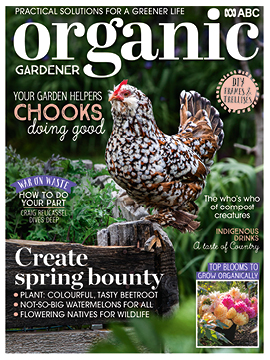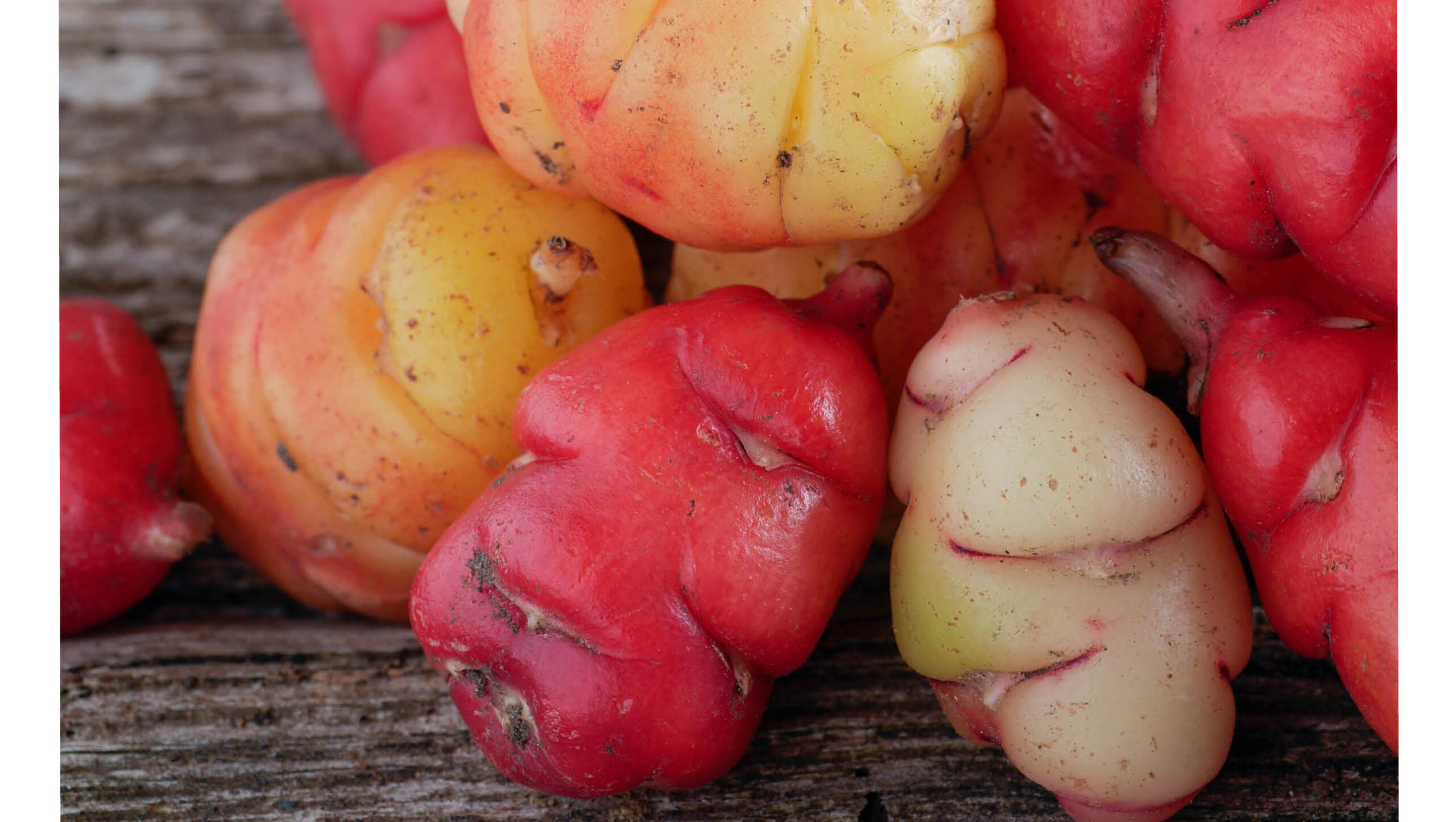Try your hand at yams
2023-08-22T05:38:53+10:00
You can tap into the highly sustaining qualities of yams, whether you have a cool or warm climate garden, writes Karen Sutherland.
Yams are productive staples native to Africa, parts of Asia and also Australia, having provided life-saving sustenance for thousands of years to communities around the globe.
Traditionally thought of as crops for tropical and subtropical gardens, yams are now being grown in cooler regions as well, thanks to climate change and grower experimentation, with an increasing range of cool climate yams for southern gardeners to try.
Among the Australian natives that were major food sources for Aboriginal people before the arrival of white settlers are yam daisy, and bulbine, chocolate and vanilla lilies.
The word yam is mostly a common name for Dioscorea species. Not all of this species are edible, and none should be eaten raw, but are safe to eat when cooked. Some native species can be eaten raw.
When discussing yams and similar plants, the underground components are described as ‘grandmother’, ‘mother’ or ‘daughter’. The former relates to the oldest parts of the plant while the latter is the new offshoots. It’s important to know the differences when harvesting and re-planting as the part used varies depending on the species.
Oca
Oca or New Zealand yam (Oxalis tuberosa) is easily grown in cooler climates. In its original home of the Andes, oca is a staple food crop, and can produce tubers in even the poorest of soils.
Tubers come in colours ranging from yellow to pale pinks and deep reds. They are typically planted in spring (but you can experiment), sprouting edible three-lobed leaves and stems that are very attractive to chickens.
As the weather cools and the top growth dies down, the tubers can be harvested all at once, or left in the ground and harvested gradually. Tubers have a pleasant lemony tang but to reduce the oxalic acid content and sweeten the flavour, leave tubers in the sun for a few days before eating. Cook by boiling, frying or roasting.
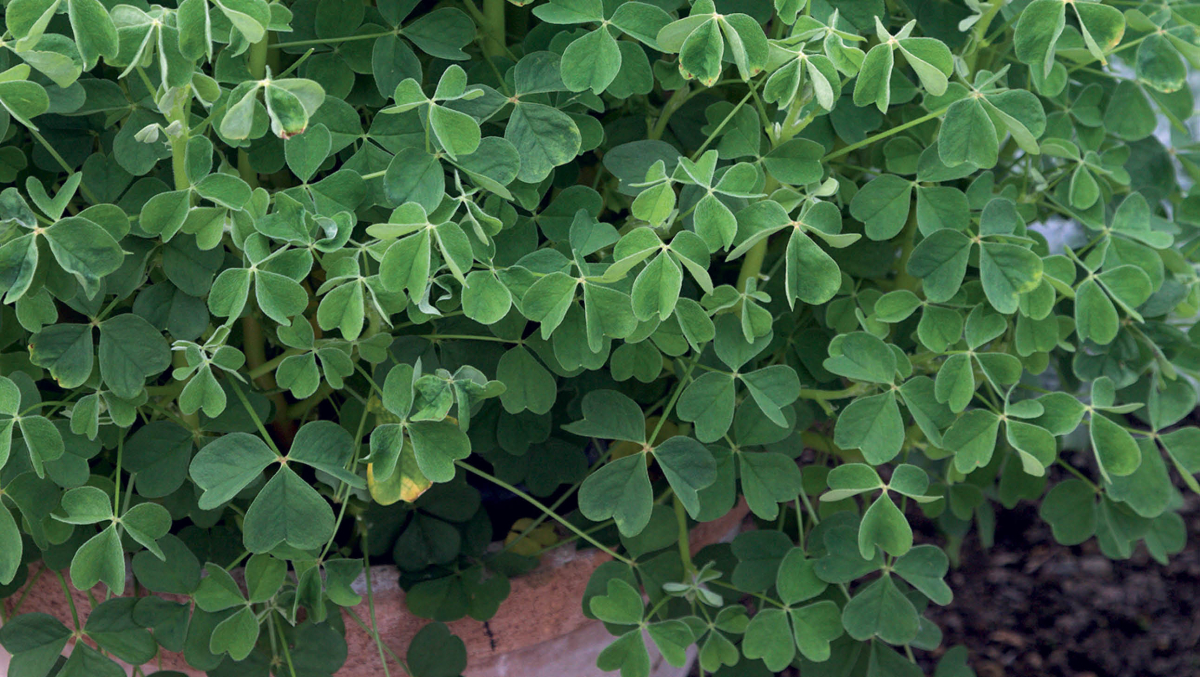
Green Harvest nursery describes a method to grow them through winter in the frost-free northern parts of Australia. Buy some oca tubers and store them in a plastic bag in the vegetable crisper of your fridge, and in March, as temperatures start to drop, plant out in the garden and harvest when temperatures and humidity rise again. Oca grows well in pots, but doesn’t produce tubers well in shady gardens.
• For tubers: greenharvest.com.au, daleysfruit.com.au, thelostseed.com.au and others.
Native cool-climate yams
In southern Australia, a variety of perennial lilies and orchids were traditionally grown and harvested for food. They were grown in areas of grassland and open woodlands, often kept clear by cool-burn fires, and they thrived due to the cyclical care of Aboriginal women, who dug over the soil so the roots could grow freely. Some underground parts were harvested and eaten and others were replanted. These plants all need friable well-drained soil to thrive, and will do well in your vegetable patch. Allow all native yams to establish for
2–3 years before harvesting.
- All can be bought as tube stock from Indigenous nurseries or as seed from victoriannativeseed.com.au.
Yam daisy
Yam daisies (Microseris walteri syn. M. lanceolata and M. scapigera), also known as murnong and marnong in many Indigenous Australian languages, were widespread across the plains of southern Australia, and were cultivated and valued as a major food source before the arrival of European people. Sheep and cattle quickly decimated these plants and compacted the soils in which they had grown. When harvesting, eat only the mother, and replant the grandmother and child tubers. Murnong can be grown by sowing seeds into moist, friable soil, and this can be more successful than planting from tube stock. Although the smaller of the two, M. walteri is the tastier and was the most widely grown.
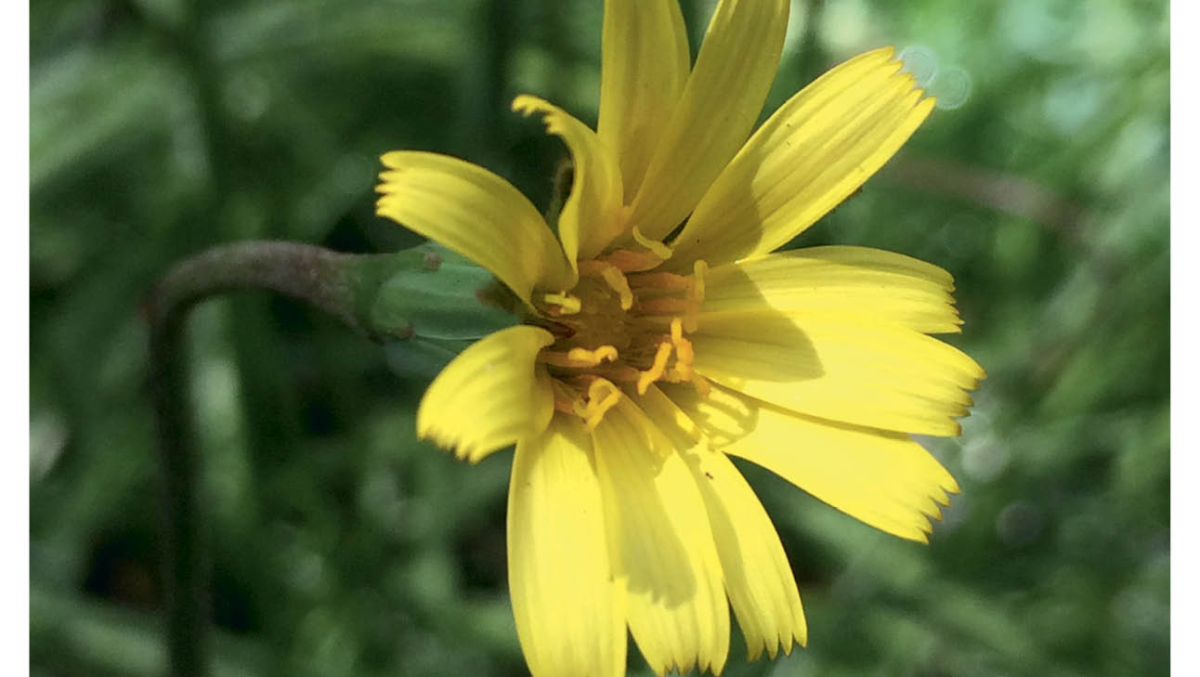
Bulbine lily
Bulbine means bulbous, and these yams are fatter than other native cool-climate yams. Bulbine lilies (Bulbine bulbosa, also Bulbine glauca) occur naturally along the eastern side of Australia, from Queensland to Tasmania. They can be grown from seed, or planted out as tube stock from Indigenous nurseries. Bulbine lilies have long succulent leaves from autumn to early summer, and produce a beautiful yellow flower stalk in spring. The yams can be eaten raw or cooked, and are delicious when slow baked.
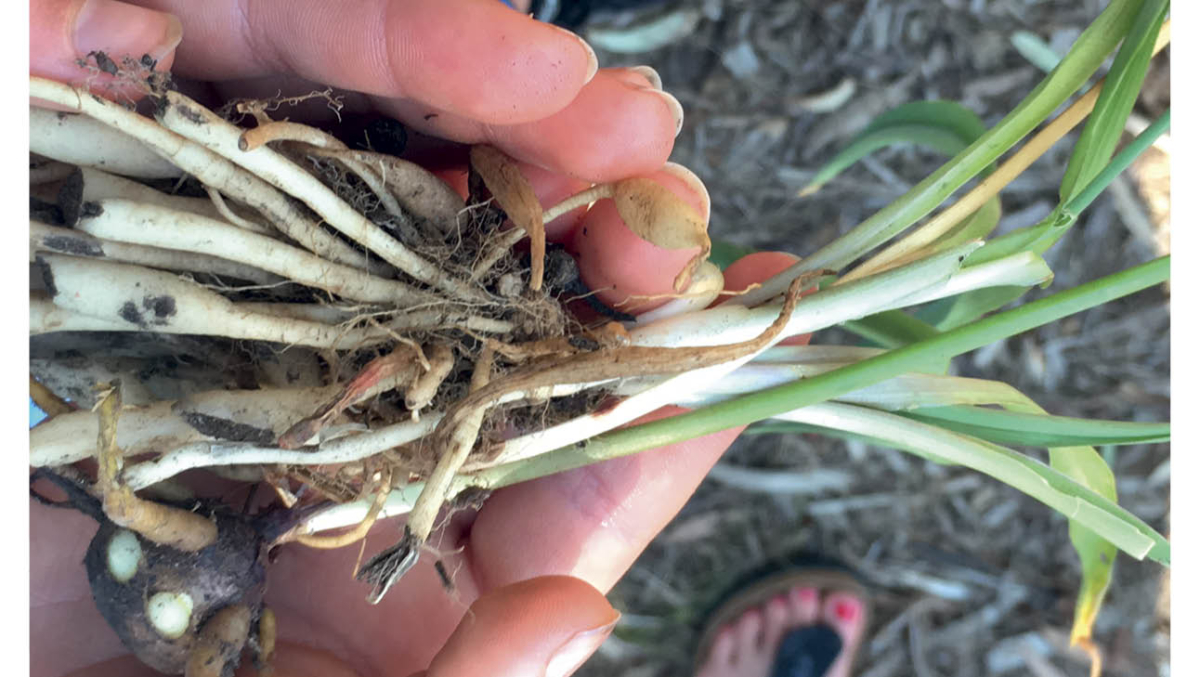
Chocolate lily and vanilla lily
Chocolate lilies (Arthropodium strictum) are known for the sweet chocolate scent they bring to bushland or gardens in spring; vanilla lilies (Arthropodium milleflorum) are also scented. Bulbs are the edible part of both species and can be eaten raw, sliced and fried in butter, or roasted.
Chocolate lilies have small rounded yams at the end of long thin roots, which can even be bandicooted, or dug from the side of the plant. Vanilla lilies have long slender roots.
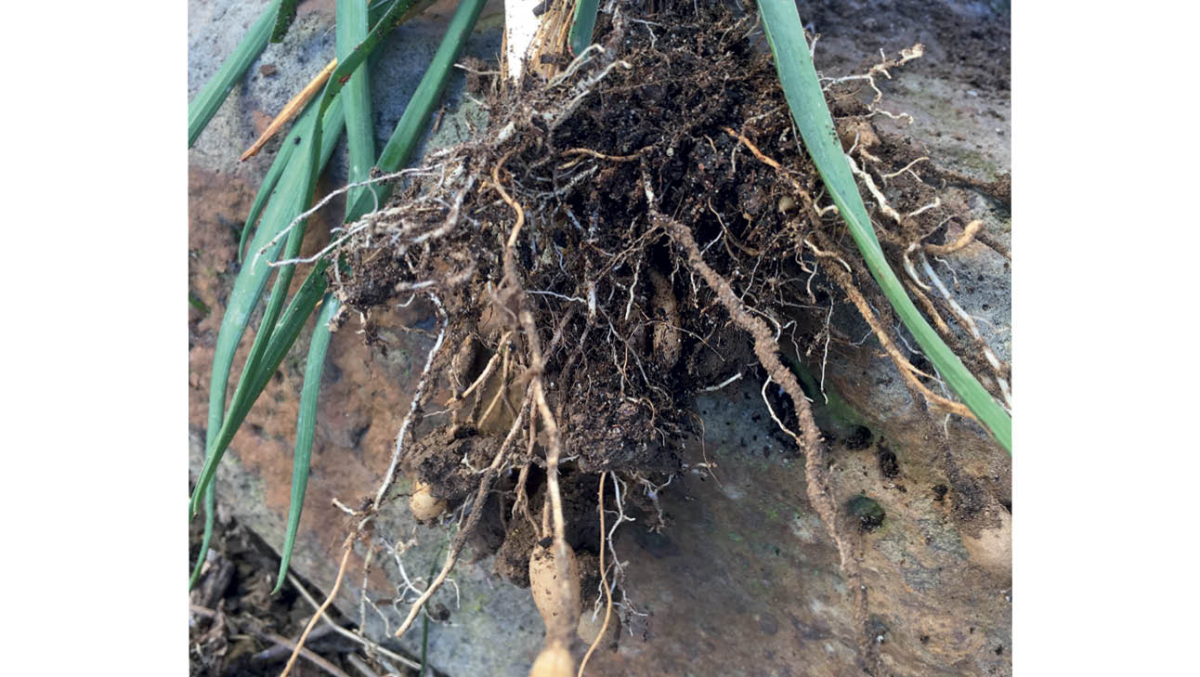
Yams for warm climates
Winged yam
Winged yam or greater yam (Dioscorea alata) is a climber grown as a potato substitute in warm coastal climates. Originally from South East Asia, it has naturalised in Far North Queensland and on the Cape York Peninsula. In the garden, if given rich, well-drained soil, it can produce large underground tubers weighing up to 30kg. Winged yam can be easily grown as far south as Sydney in frost-free areas, and is being grown in Melbourne by Asian immigrants and novel crop pioneers such as Dr Chris Williams in community gardens and gardens with protected warm microclimates. Plant tubers in spring into compost-rich soils after they have sprouted. Make sure they get plenty of water in regions with dry heat in summer. The vigorous vine is best given a strong wire trellis to climb up, and the large underground yam harvested when the leaves start to die off. This yam can be used as you would cook potatoes, by baking, mashing, making chips or boiling.
- Not usually available from nurseries, tubers can be bought from Asian greengrocers, many food markets and greenharvest.com.au.
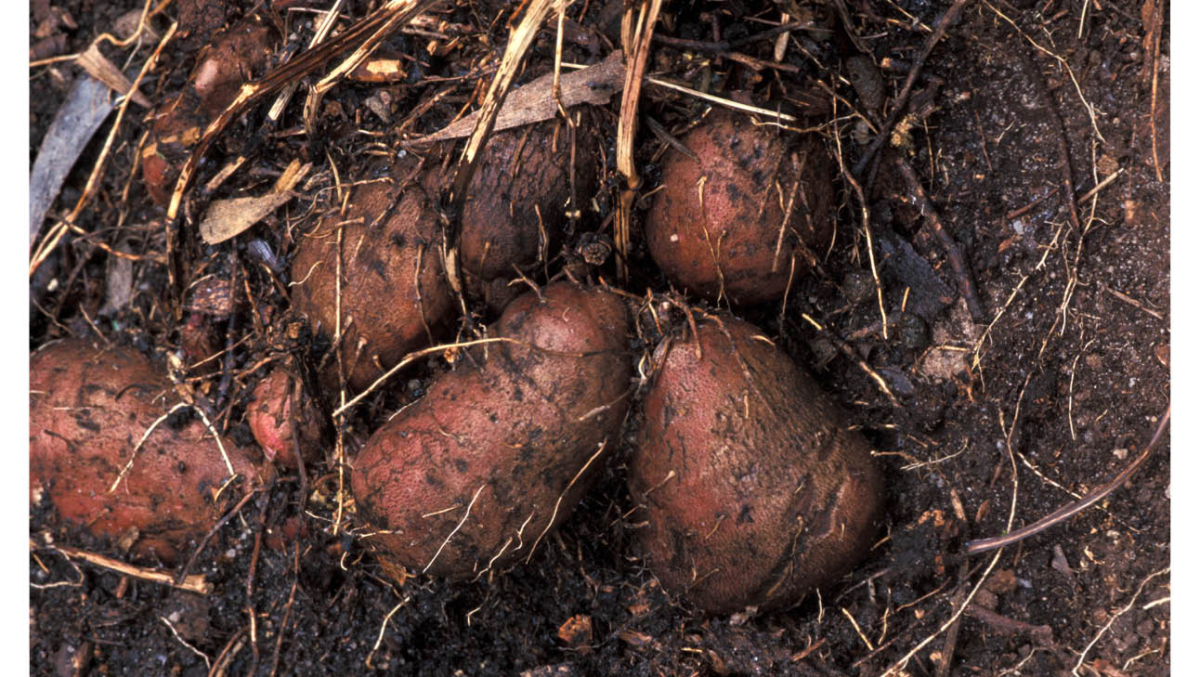
Aerial potato
Aerial potato (Dioscorea bulbifera) is an even more vigorous tropical vine, producing edible tubers along its stems from late summer through to winter. These are collected and eaten, and some saved for replanting next spring. Plants need similar conditions to winged yam and are used in the same ways.
It is weedy in warmer more humid regions, so make sure it doesn’t escape your garden. In warm microclimates in temperate regions it’s not a problem weed.
- Source tubers from community gardens in warm climates, and also Northey Street City Farm in Brisbane (nscf.org.au).
Kulyu
Kulyu (Ipomoea calobra) is a climbing plant native mostly to inland Western Australia, north of Geraldton. It can reach 6m high, has a light purple flower and the tubers are similar to sweet potatoes. Kulyu was part of a study by Geoff Woodall, a native plant agronomist, who looked at 200 native tubers from WA for their potential to be farmed. He found that Kulyu is easily damaged by frost and that it’s best grown in a raised bed to facilitate harvesting, as the plant grows so deeply. Since his study, novel crop pioneers such as Dr Chris Williams have been trialling the plant in Melbourne. It can be grown from seed.
- Visit Nindethana Australian Seeds (nindethana.net.au) to see if they have any seed available.
This feature was first published in our January/February 2019 issue (OG 106). Karen Sutherland often writes about native plants in OG. Check out our latest issue here.
